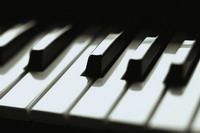Piano Sheets > Jason Aldean Sheet Music > Big Green Tractor (ver. 1) Piano Sheet
Big Green Tractor (ver. 1) by Jason Aldean - Piano Sheets and Free Sheet Music

About the Song
"Big Green Tractor" is a song written by Jim Collins and David Lee Murphy, and recorded by country music artist Jason Aldean. It is the second single released from his 2009 album Wide Open, as well as the eighth single of his career. It debuted at #48 on the Billboard Hot Country Songs chart in May 2009. The song is a mid-tempo where the narrator asks if his lover wants to go to town with him, or if she would rather ride with him on his "big green tractor". Jason Aldine Williams (born February 28, 1977 in Macon, Georgia) is an American country music singer, known professionally as Jason Aldean. He has recorded three albums on the independent Broken Bow Records label: Jason Aldean, Relentless, and Wide Open, in 2005, 2007, and 2009 respectively. These albums have accounted for eight singles on the Billboard country singles charts, including the Number One hits "Why" and "She's Country". His.
Download this sheet!
About the Artist

Random article
How to enhance sight-reading for piano sheet music If you want to learn how to play, the piano in a live performance impromptu then you need to improve your sight-reading of sheet music. Chances are you will have to play music notes, which are unfamiliar.
Picking it at random
One of the best ways to enhance your sight-reading of piano notes is to pick any book randomly and start playing. Ideally, you want to start playing these musical notes from the first page and continue until you reach the very end. The trick is to be stern with yourself and not stop playing until you reach the last page of the sheet music.
(More...)
